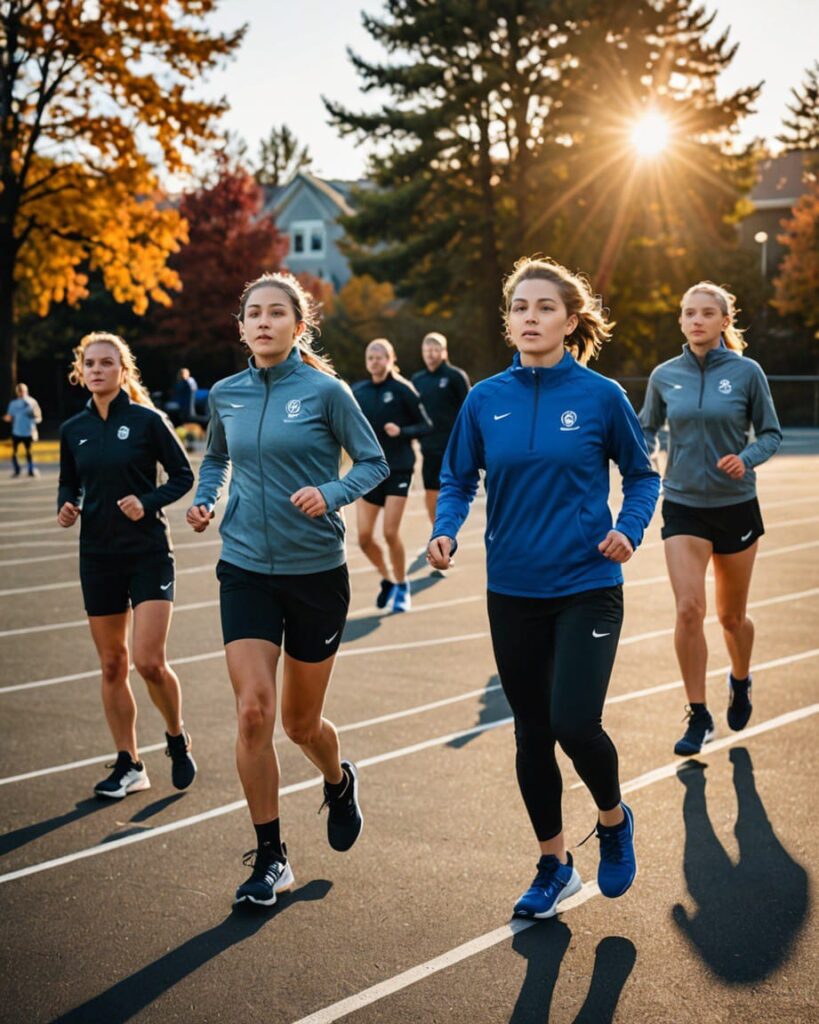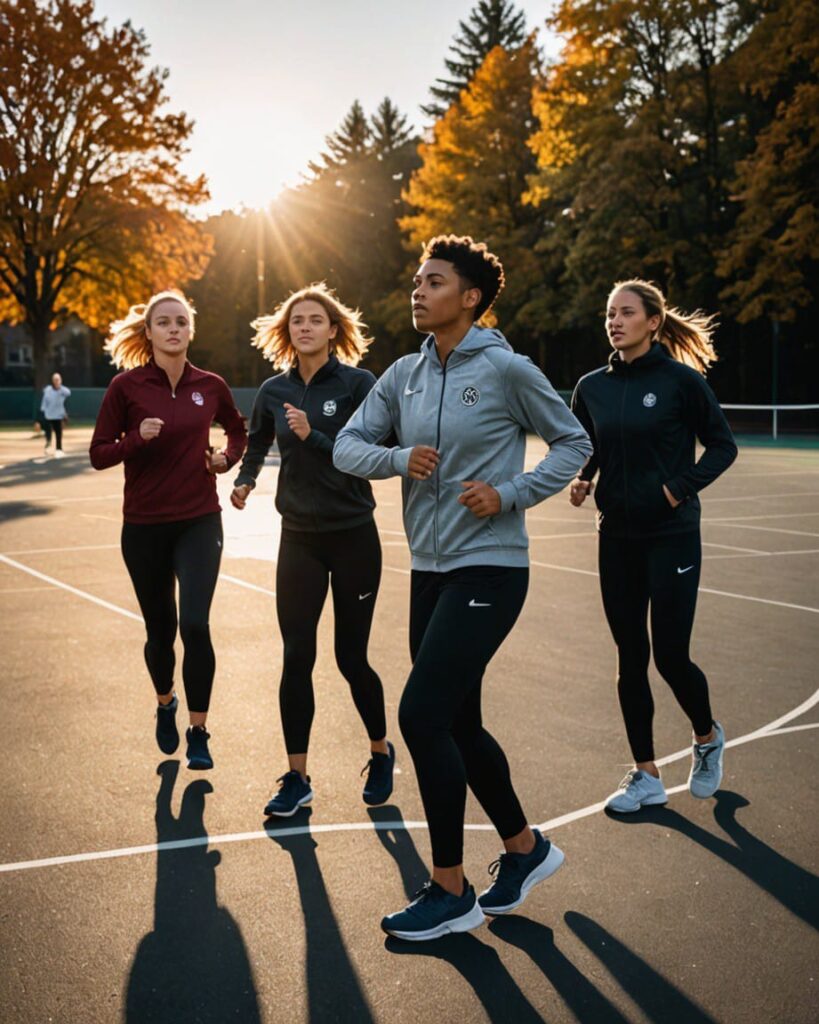🏃♂️ Why Preventing Athletic Injuries Matters
Physical Conditions: Sprains, Tears, and Overuse Sports injuries—ranging from sprains to ACL tears to overuse conditions—are common among athletes of all ages. Close to 80% of long-distance runners and 44% of short-distance runners suffer from at least 1 injury a year. These injuries don’t just bench the athletes: they can cause lifelong pain, missed games of play, and more trips to the doctor. Is there any positive news? The vast majority are preventable with the right strategies—from training and nutrition to equipment and environment awareness.

🔬 Evidence-Based Prevention Strategies
- Neuromuscular Training & Warm‑Up Protocols
It has been shown in athletes that programs such as FIFA 11+ and Swedish Knee Control decrease the incidence of ACL and lower extremity injuries.
A warm-up that combines dynamic movements and proprioception exercises has been shown to decrease lower extremity injury risk by ~37–47%.
Proper Technique & Coaching
Poor biomechanics is a significant risk. Consistent technique feedback, skill development, and video analysis improve form and injury rates.
Progressive Strength & Conditioning
Solid stances, balance, core training, and functional exercise preserve stable and strong joints.
Use of Appropriate Equipment
Equipment for each specific sport should be appropriate, including footwear, headgear, and bracing. And replacing running shoes after around 300–500 miles is also key.
Balanced Nutrition & Hydration
Athletes require adequate calories, healthy fats, protein, fibre, calcium, vitamin D, and electrolytes. Another recent study showed that more fat, more fibre, and more calories lower running-induced injury risk.
Adequate Recovery & Rest
Rest days, active recovery, and off-seasons will reduce overuse injuries. For kids playing sports, if you can cap the organised sport hours at the appropriate age and put in some unstructured play, you’ll lower the chance of injury.
Environmental Risk Assessment
Conditions, field facilities & equipment adequacy, and weather also all factor into safety as well. The risk of injury is reduced on soft, level ground.
Monitoring & Early Intervention
Monitor how tired, sad, sore, anxious, or stressed you feel. The best predictor of future injury is previous injury—nipping things in the bud prevents the same thing from happening again.
⚙️ Technology & Innovation in Prevention Three billboards bearing a photo of a cabbage and other VaioFailNeverstars (the parade of Limbaugh’s studio lights are now in town, and nothing sounds quite the same) have collapsed from the sky 33 feet over the Times Square parade grounds and now have the words “Caught in a Church Robbery” written all over them.
Smart Wearables & AI
“Innovative wearables, such as smart shorts with inertial sensors, can now analyse the movements of these two joints over time while on the field to help prevent injury. The “Alpha Shorts” from Theo Health are being tested on elite athletes for ACL prevention.
Intelligent Training Floors
LED-infused flooring, complete with grip and sensors, doesn’t only monitor movement but also adds a safety element and can prevent both slips and non-contact injuries.
AI Monitoring Tools
Knitting-like wearables measure strain sensors that cover the user longitudinally, finding muscle imbalances during exercise—a potentially promising early intervention for injury.
📊 Case Study: ACL Injuries in Women’s Sports
Following an ACL tear, female athletes can use up to 8 times the amount of strain that is required for males. Experts highlight the impact of modifiable factors—workload, quality of pitch, psychological stress, and lack of sleep—and push for universal neuromuscular training (e.g., FIFA 11+). Resolution of weed, as well as a reduction in risk by 70 percent, can be achieved with holistic prevention that considers both technique training, environment, and mental health.
🧰 Summary of Prevention Tactics
Category
Tactics
Warm-Up & Neuromuscular Training
FIFA 11+, dynamic stretching, balance exercise
Strength & Technique
Sport-specific strength, technique coaching
Nutrition
Calories, fats, protein, fibre, and hydration is sufficient
Equipment & Environment
Right equipment, good surfaces, and regular upkeep
Recovery & Monitoring
Rest days, off-seasons, fatigue/sleep tracking
Tech Integration
Wearables, smart surfaces, AI monitoring

❓ FAQs
Q1: What is the frequency of warming up for an athlete?
Shoot for 10–15 minutes of warm-up before every training session, mixing in some light cardio with dynamic, sport-specific drills.
Q2: Is resistance training required for all sports?
Yes—strength, core, and balance programs help stabilise the joints and reduce injuries, regardless of the sport or activity.
Q3: Are there any real nutrition adjustments?
Absolutely. Fat, fibre, and enough calories were associated with decreased injury rates; dehydration and poor nutrition increase the risks.
Q4: What role does rest play?
Major. Rest days, active recovery, and breaks help to avoid overuse injuries—which is crucial for developing youths.
Q5: Can tech actually stave off injury?
Yes—wearables such as Theo Health’s devices and smart courts make use of real-time data to calculate high-risk movements, which reduce the risk of injury.
🟢 Conclusion
Sport injury prevention is underpinned by a multi-modal approach:
Train smart: neuromuscular programs, strength workouts, and skill coaching.
(2) Fuel well > Nutrition well – Eat the right amount of balanced nutrition – Drink well > Hydration well 4.
Fully recover: rest periods, off-seasons, and fatigue surveillance.
Gear up safely: appropriate outfitting, maintained environments.
Incorporate tech: wearables and monitoring tools for in-the-moment feedback.
By implementing these methods, athletes can reduce their injury risk by more than 50–70%, make consistent gains in training, and improve long-term health and performance. Prevention is more than avoiding setbacks; it’s the key to unlocking the full potential of an athlete and to longevity.